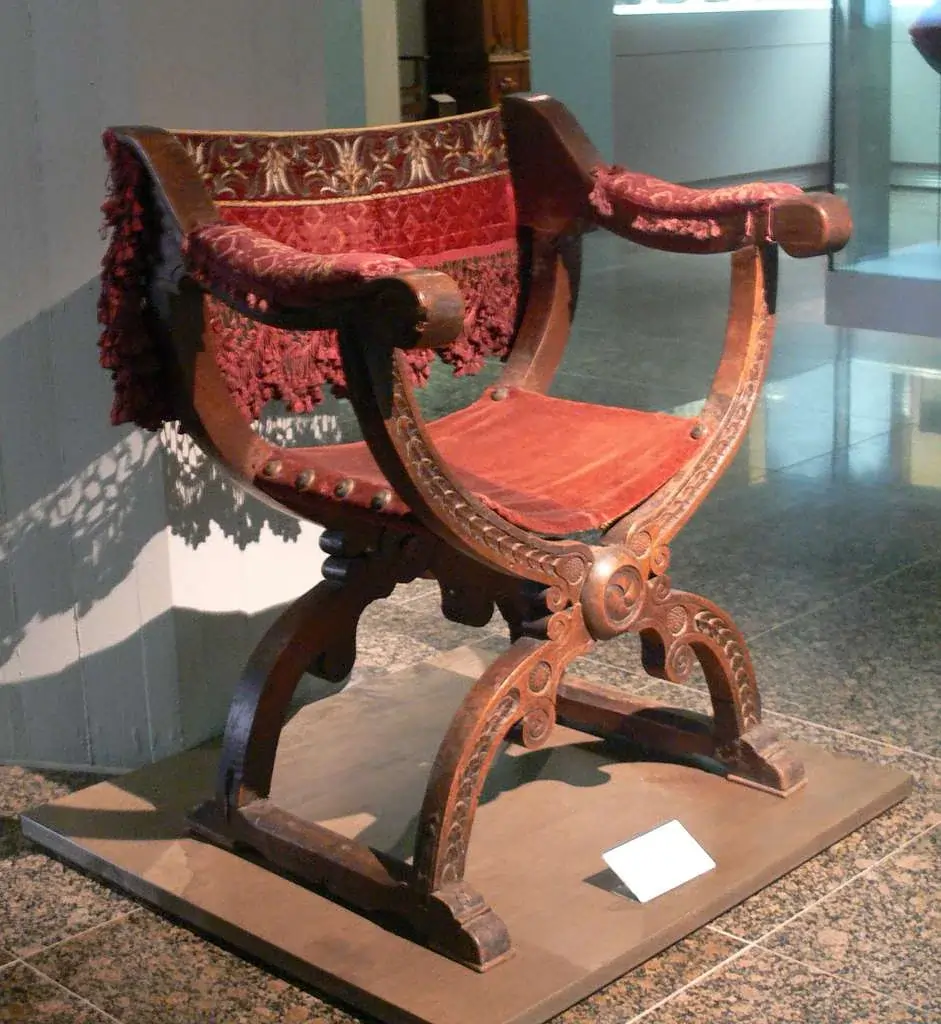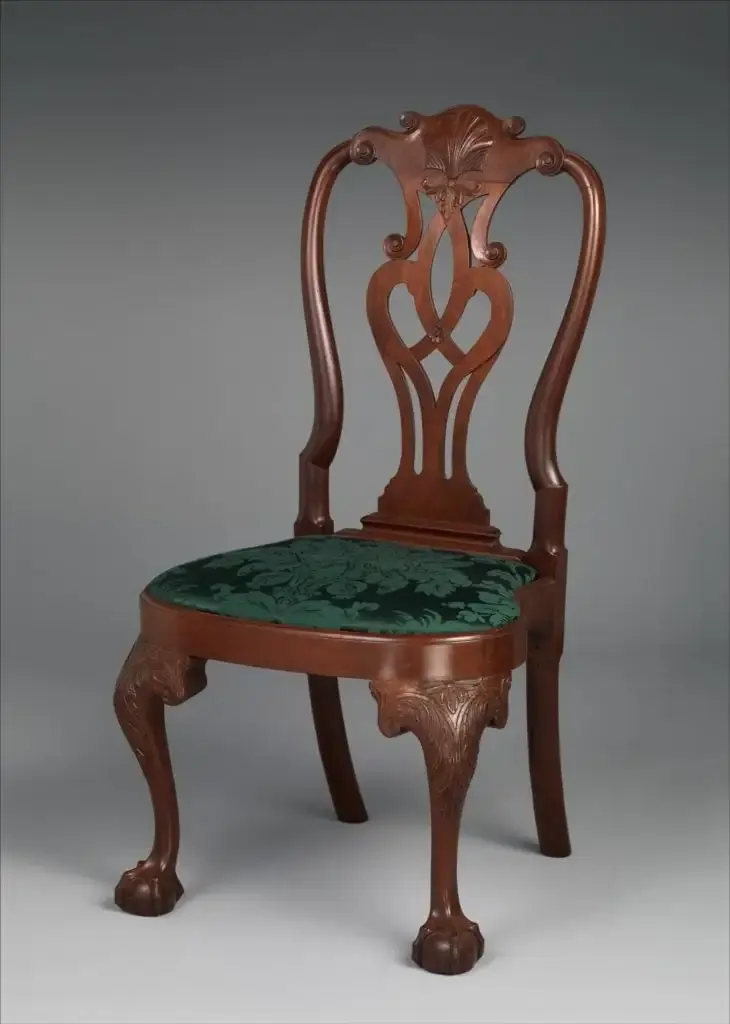The curule seat remains a representation of influence and control, throughout history—from the days of senators to the era of medieval monarchs—this unique X shaped chair has adorned the halls of leadership for more than two thousand years now! Nowadays we have the opportunity to replicate this chair model in our own workshops by blending age old handiwork, with contemporary tools and materials. Let’s go through the process of creating your curule chair in this manual – starting from choosing the materials to incorporating those final decorative details that pay homage to its historical significance while also meeting modern requirements.
Understanding Curule Chair Origins
The history of the curule chair can be traced back, to Rome in the 6th century B.C., when it was known as the sella curulis. A seat that symbolized authority and power, among magistrates after the Romans adopted it from the Etruscans.
Historical Development and Significance
In Ancient Rome times, past the use of the curule chair was closely controlled with restrictions in place. Only certain officials like consuls and praetors were granted the privilege to take a seat on these chairs of authority and power held by dictators too. The importance of these chairs stretched beyond Rome; the Senate gifted ivory curule chair, to kings allied with them as tokens symbolizing bestowed authority and influence.
Key Design Elements and Features
The traditional curule chair incorporates several distinctive features:
| Feature | Description |
| X-Frame Base | Overlapping S-curved legs forming a wide X |
| Materials | Primarily ivory veneer or precious woods |
| Structure | Foldable design for easy transport |
| Seating | Low arms with no back support |
Traditional Construction Methods
We observe that medieval craftsmen employed specific materials and techniques in constructing these chairs:
- Primary woods: Pear wood and maple for durability
- Decorative elements: Carved lions, dragons, and rosettes
- Paint applications: Red, green, white, yellow, and blue pigments
- Joinery: Wooden pins at cross-sections instead of iron fasteners
The design went through stages of development over time. During the era Christian symbolism was prevalent, in its features. For example in the 13th century chair, from the Benedictine cloister Admont had lion heads that symbolized Christ and dragon feet that represented triumph over evil. In the Renaissance period artisans put their spin on the Roman design by incorporating regional styles but still keeping the fundamental X frame structure intact.
Essential Materials and Tools
Choosing the right materials and tools is essential when crafting an authentic curule chair that reflects a blend of traditional craftsmanship and modern design elements.
Wood Selection and Alternatives
For historical authenticity, we recommend pear wood as our primary choice. This wood offers several advantages:
- Natural pinkish coloration
- Excellent carving properties
- Historical accuracy to ancient examples
- Suitable grain structure for detailed work
If pear wood is not an option for us to use there are hardwoods that offer characteristics for crafting and aesthetics purposes. The important factor is selecting wood that’s 5cm thick, for the primary parts.
Required Tools and Equipment
Our essential tool collection for curule chair construction includes:
| Basic Tools | Power Equipment | Precision Tools |
| Chisels (1″ width) | Band saw | Forstner bits (3cm) |
| Spoke shave | Scroll saw | Machine drill |
| Templates | Router with guide | Measuring tools |
| Marking gage | Planer | Carving tools |
Modern Material Options
We are currently observing advancements in furniture materials that provide eco options to conventional woods, driven by the environmental repercussions of the furniture sectors practices.
- Bio-plastics derived from natural sources
- Augmented wood products with enhanced durability
- Composite materials that reduce forest depletion
- Upcycled materials for environmental consciousness
These contemporary choices have the potential to lessen our impact while preserving the features of the chair. However it is advisable to weigh the harmony, between genuineness and eco friendliness according to your needs.
When it comes to upholsteries, for furniture pieces like chairs and sofas; we recommend opting for either leather or the contemporary outdoor rated upholstery fabric which offers excellent resistance to moisture and is available in a variety of stylish patterns – perfect for giving a modern twist to classic pieces, like the curule chair.
Step-by-Step Construction Guide
Let’s start putting our curule chair while paying special attention to the unique X-frame that characterizes this ancient Roman seat design. Our method merges techniques, with precision tools to guarantee precision and longevity.
Creating the X-Frame Components
We start by preparing the signature X-frame legs, which form the chair’s foundation. Each leg requires careful attention to achieve the proper curves and angles. Here’s our proven sequence:
- Cut four identical leg pieces from our prepared hardwood
- Mark the center points for half-lap joints
- Create templates for consistent curves
- Shape the legs using our bandsaw
- Sand and smooth all curved surfaces
Joint Construction and Assembly
The core of our chair rests, in its craftsmanship. We prioritize crafting long lasting connections that enable folding functionality. The key dimensions, for the half lap-joints are as follows;
| Joint Component | Measurement | Purpose |
| Center Circle | 8cm diameter | Pivot point |
| Depth | 50% of thickness | Even weight distribution |
| Overlap | 2cm minimum | Structural integrity |
We use pegs at the joints of metal screws to keep the historical feel intact and guarantee smooth functionality. The crucial element is positioning – even a tiny shift can impact the chairs steadiness.
Adding Decorative Elements
In line, with styles of design we embellish our curule chair by adding carvings. The circles on the front provide spaces for carved ornate rosettes a timeless detail seen in historical pieces. We meticulously place these accents to avoid any disruption, to the chairs folding function.
Our carving work focuses on:
- Symmetrical patterns on visible surfaces
- Traditional motifs in low relief
- Clean, precise edges around decorative elements
The beauty of the chair shines through when we pay attention to its intricacies all the while ensuring that its structure remains strong and soundly built. Each intricate carving contributes to its character without sacrificing the functionality of our design inspired by Roman chairs.
Finishing and Upholstery
Enhancing the touches and upholstery work elevates our designed curule chair, from a simple wooden structure to an elegant furniture piece blending traditional and modern techniques for a polished outcome.
Traditional Finishing Techniques
We start by using proven finishing techniques that bring out the beauty of the wood we select to work with. The classic oil rubbed finish is still our pick, for showcasing the grain designs found in hardwoods. Our approach includes;
- Initial sanding to 220-grit
- Application of bone hide glue sizing
- Multiple thin coats of oil finish
- Hand-rubbing between coats
Modern Finishing Options
Today, we have access to superior protective finishes that offer enhanced durability while maintaining historical esthetics. Here’s our comparison of finishing options:
| Finish Type | Advantages | Best Use Case |
| Penetrating Seal | Durable, beautiful | Hardwoods |
| Water-resistant Coating | Stain protection | High-use areas |
| Acrylic Finish | Satin appearance | Contemporary styles |
Upholstery Methods and Materials
We approach the upholstery process with careful attention to both comfort and historical accuracy. Our preferred method uses multiple layers:
- Foundation Layer: Jute webbing provides essential support
- Middle Layer: Traditional horsehair or modern alternatives
- Top Layer: Period-appropriate fabric or leather
To achieve outcomes we utilize sanitized horsehair sandwiched within layers of burlap and skillfully sewn to form the intended shape. Contemporary options consist of top notch performance textiles that provide resistance to stains and ease of cleaning. Ideal, for giving a twist to the classic Roman chair design.
When we choose upholstery materials, for furniture like the curule chair style seat we’re looking at both style and function aspects to it carefully. Classic leather needs attention when it comes to care. As time passes by it develops a worn in look that adds character to the piece. On the hand today’s high tech fabrics are super durable and easy to clean making them perfect, for use while keeping that dignified look of the curule chair intact.
To keep it in condition over time; It’s best to dust it with a soft cloth and avoid using strong chemicals no matter how you’ve finished it off. This way we can keep the finish and the upholstery looking great. Our curule chair will stay a part of history that’s still useful.
Conclusion
Our exploration, into crafting a curule chair blends the age artistry of Romans, with contemporary woodworking methods showcasing a stunning furniture piece that upholds its tradition as a symbol of power and craftsmanship excellence.
We have examined building techniques that involve using materials such, as pear wood and ivory well as newer options that provide both longevity and eco friendliness in construction projects. The meticulous focus on X-frame structure design and accurate craftsmanship, with features guarantees that every chair retains its historical charm while fulfilling present day requirements.
The final details: Ranging from timeless oil rubbed finishes to coatings and the decision, between traditional horsehair upholstery and high performance fabrics. Enable us to craft furniture that pays homage to history while adapting to current needs and practicality. By incorporating these design and construction elements into the process we uphold the nature of the curule chair, for forthcoming generations to admire and relish.
FAQs
- What is the historical origin of the curule chair?
- The curule chair, known as “sella curulis” in Latin, originated in the Roman Republic and Empire. It was a prestigious seat used by magistrates who held imperium, symbolizing authority and status.
- What does the term “curule” signify in ancient Rome?
- In ancient Rome, “curule” referred to items associated with high-ranking officials entitled to sit on a special chair. This term specifically relates to a chair or seat reserved for Romans of high rank, resembling a backless stool with curved legs.
- Can you explain the history of the Savonarola chair?
- The Savonarola chair, commonly linked to the 15th-century Italian Dominican priest Girolamo Savonarola, is a variant of the X-form chair found in the convent of San Marco in Florence. Unlike the “Dante” chair, which is a heavier version, the Savonarola does not fold.
- What is the Greek definition of curule?
- In Greek context, “curule” relates to the authority of senior magistrates in ancient Rome. These officials, due to their high status, were entitled to sit on the sella curulis, a foldable x-shaped chair.



